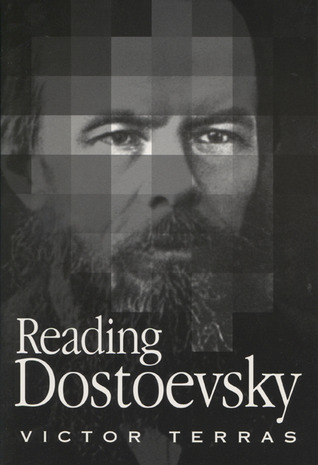What do you think?
Rate this book


184 pages, Hardcover
First published November 16, 1998
"Dostoevsky's novels encompass antagonistic philosophies and value systems. He is an excellent 'devil's advocate.' Sophisticated readers have mistaken for his own ideas what Dostoevsky was in fact trying to refute. Dostoevsky's negative characters, his losers, scoundrels, and villains, are presented with as much empathy as his tragic heroes. Bakhtin drew attention to the carnivalistic strain in Dostoevsky's novels, where a tragic plot may develop from what was initially a scandalous incident or a bad joke. Burlesque comedy is interspersed with tragic action. Serious ideas are advanced by disreputable types, buffoons, or characters who are clearly wrong about things that are dear to the writer's heart. Often Dostoevsky's most cherished thoughts appear in travesty…" (6)The overall goal of Reading Dostoevsky by Victor Terras is, I think, to demonstrate Dostoevsky's unique art (and, as a corollary, to defend it against critics and criticisms) through a series of close readings of his novels (and, to a lesser extent, his stories and other writings). I appreciate the fact that, while the bulk of the analysis centers on Crime and Punishment, The Idiot, The Possessed a.k.a. Demons, A Raw Youth a.k.a. The Adolescent, and The Brothers Karamazov, Terras covers nearly all of the Dostoevskian oeuvre at one point or another, as his discussion of the writer develops and (logically) culminates in a close reading of The Brothers Karamazov.
"Where, then, is the art of Crime and Punishment? First of all, it rises from the vigor of Dostoevsky's imagination, which produces an abundance of wonderfully alive scenes, characters, and ideas. Second, it comes from the extraordinary power of his language, activated by a great variety of devices. Among these, the most important are a dramatic technique of scenic presentation, the presence of dialogic form even in narrative passages, the use of polarized extremes in every aspect of the text, and a playing down of the melodramatic effects of the action by travesty. The result is a virtual (or 'poetic') reality that makes all but the most critical readers disregard the conventional literary quality of some of the characters and the rather makeshift plot." (72)More specifically, Dostoevsky "tends to energize his text by keeping it marked in any conceivable way, from high pathos and flowery oratory to jargon, slang, and stammer," (106) and—more technically—he marks his characters (i.e., he gives them a high quality of 'markedness') through the use of "occasional slang, slovechki [literally 'little words'—cute or apt expressions of colloquial discourse], verbal tics, intentional catachresis, and hypostatization of words and names," as well as and especially using "hedging and concession, sublimation and deconstruction" (104).